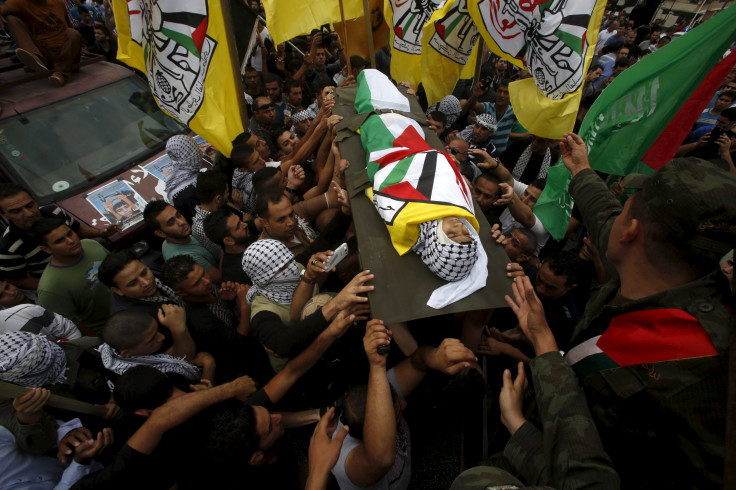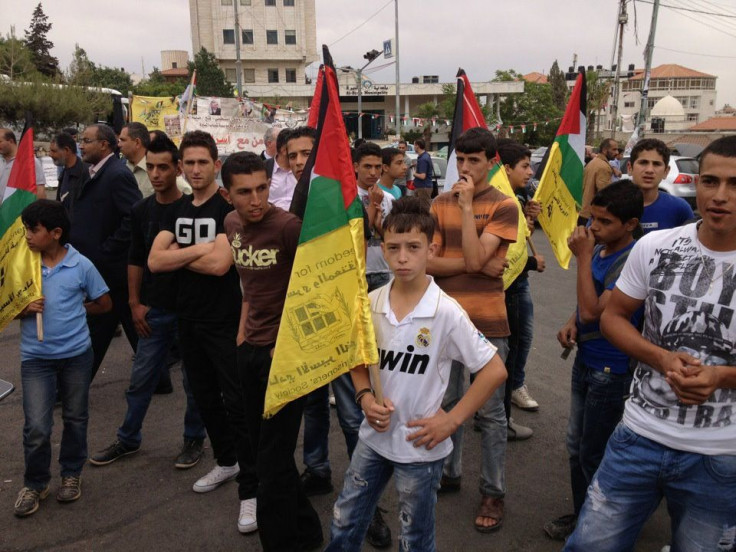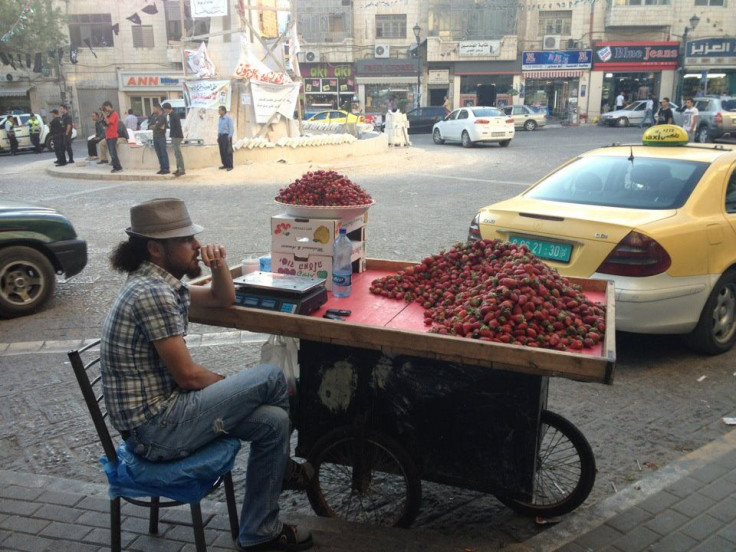Rising Death Toll, Palestinians In The West Bank Call For A Third Intifada Against Israel

RAMALLAH, West Bank – In the Palestinian Authority’s de facto capital, it looks like business as usual. With its profusion of markets and malls, this bustling metropolitan center draws consumers from all over the West Bank. Here, clusters of women, laden with shopping bags, make little distinction between sidewalk and street. Young mothers in headscarves, their children trailing, weave in between fruit sellers and juice stalls, tea hawkers and falafel stands, all noisily peddling their wares. In roadside cafes, men discuss business over black coffee with cardamom.
But the aural backdrop to this typical city scene is punctured by cries of protest. In almost every shop and restaurant, a TV plays at full volume, broadcasting clashes between Palestinian youth and Israeli police. The recent escalation in violence, concentrated in East Jerusalem and the West Bank, has culminated in the deaths of 24 Palestinians, in addition to some 1,000 reported injured, many of them teenagers, according to data from the Palestinian Health Ministry. In the same month, four Israelis have been killed, with 20 wounded, in Palestinian knife and gun attacks.

Blood spills easily in this land. Brief lulls are followed by reinvigorated hostilities. Last year’s Gaza conflict, Israel’s Operation Protective Edge, precipitated by the murder of three Israeli teens in a settlement in the West Bank, resulted in the deaths of more than 2,200 Palestinians, the majority civilians, and some 70 Israelis. The subsequent year has been one of festering anger, reignited following a dispute over Jewish presence on the site of the Al Aqsa Mosque and Dome of the Rock compound in Jerusalem’s old city, long revered by Muslims, and also by Jews as Temple Mount.
Palestinian Authority President Mahmoud Abbas has accused Israel of plotting to divide the complex, historically under Palestinian Muslim control, something Israeli Prime Minister Benjamin Netanyahu refutes. His denial has not convinced most of the 2.8 million Palestinians living in occupied East Jerusalem and the West Bank.
We are the Palestinian Resistance Fighters #Palestineresists #ThirdIntifada #Third_Intifada #Palestine pic.twitter.com/X2oZsuP2fL
— ♯TнιrdInтιғαdα ✊ (@OddLilly) October 11, 2015A man drinking freshly squeezed carrot juice in a popular bar in Al-Manara, Ramallah’s central square, told International Business Times, “The Jews haven’t learnt anything from 1967 [when Israel seized control of Jerusalem after the Six Day War].”
He points to the screen, where, five miles away, outside the Israeli settlement Beit El, defiant boys wrapped in checkered keffiyeh scarves -- the Palestinian symbol of resistance -- are throwing stones at Israeli border police, who are retaliating with tear gas, rubber bullets and occasional live rounds. “It’s all about Al Aqsa. [The Israelis] want to take it away from us.”
Younger generations are taking their rage to the streets in a series of violent demonstrations that are prompting whispers of a ‘third intifada’ or popular uprising against Israel.
In an upscale supermarket in Ramallah’s central shopping district, Sharif is selling imported American food items to middle-class Palestinians with a ken for Betty Crocker cake mixes and Reese’s Pieces candy. The 20-something, who prefers not to give his full name out of fear that Israel’s security services can identify him, is not certain whether recent violence is the beginning of an intifada but he certainly hopes so.
“I want [an] intifada. Everybody wants [an] intifada.”

As he scans strawberry yogurts and Cinnamon Toast Crunch cereal over the till, Sharif tells IBT, “We can’t take it any more. We see the [Israeli forces] kill our children and women every day.”
He removes his phone from his pocket and reveals a photo of one of the more recent Palestinian casualties – an 18-year old girl lying in a pool of blood. Moments before the picture was taken, she was shot by an Israeli soldier at a checkpoint in the West Bank city of Hebron, following an attempted stabbing, according to an Israeli army spokeswoman.
“Look, look, what can we do? They don’t want peace. They want to kill us. How can we not fight back?” Sharif asks, flicking through a series of increasingly brutal and gory photographs, before returning to tally up a customer’s bill.
Palestinian social media is filled with pictures of atrocities – bloodied, glass-eyed children, their parents clinging to them, commonly accompanied by the hashtag ‘#The_Third_Intifada.’ “The Third Intifada is already here, or, in the best case, is just around the corner,” writes one. Another tagged poster exhorts Palestinians to “Resist with a stone … with a knife.”
#the_third_intifada Resist with a stone ... with a knife
Posted by Ola M. Fahes on Sunday, 11 October 2015
The catalyst for the last major Palestinian rebellion was Israeli politician Ariel Sharon’s provocative visit to Temple Mount in September 2000, further aided by public endorsement from Yasser Arafat, the late Palestinian leader and popular hero. Fifteen years on, tensions over right of prayer in the Temple Mount are brewing but not everyone’s convinced that another “shaking off” is on its way.
Faisal Taha works in a phone shop on a street named for Arafat, Palestine’s fallen leader. The 25-year-old doesn’t believe the current crop of leaders can rouse the same level of public support. “[Arafat] was special. He loved the Palestinians and we loved him. Nobody can bring people together like him.”
The recent spasm of violence, Taha thinks, is more of the same. To him, the clashes are not qualitatively different from last year or the year before, although he knows how quickly things can change. He was only 10 years old when the second intifada broke out but he remembers the consequences. “There was an Israeli tank a few meters from my house … It was crazy.”
Despite the bloodshed, an intifada, Taha says, can usher in a time of Palestinian unity. “No one was on the streets. Everybody was home but everyone was together.” He pauses and laughs. “It was nice.”
© Copyright IBTimes 2024. All rights reserved.





















